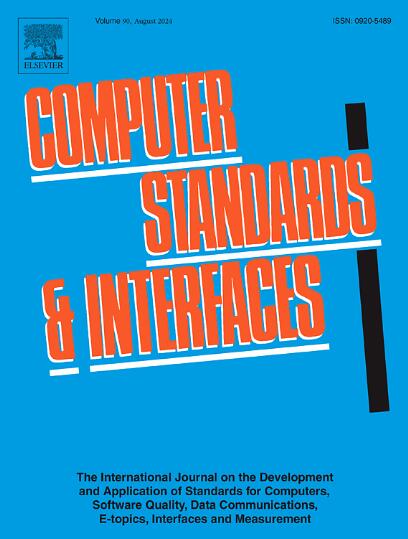Maintainable verifiable data streaming based on redactable blockchain
IF 3.1
2区 计算机科学
Q1 COMPUTER SCIENCE, HARDWARE & ARCHITECTURE
引用次数: 0
Abstract
The verifiable data streaming (VDS) protocol enables clients to delegate locally generated data items (i.e., data streaming) to a semi-honest cloud server in real time while maintaining data integrity. It is built upon a chameleon authentication tree (CAT) and digital signatures. That is, a user may confirm the retrieved data item’s integrity by recomputing the hash value on its underlying CAT root and further checking a signature of this value created by the data owner. However, many lightweight application scenarios may not deploy public-key infrastructure (PKI) to support the digital signatures. Moreover, in frequently updated application scenarios such as trend analysis and stock forecasting, many new digital signatures are generated, and malicious cloud servers might return old versions of a queried outsourced data item and the corresponding signature. Consequently, maintaining those previously created signatures becomes a challenge. In this paper, to overcome these issues, we put forth a novel construction framework of VDS by introducing a redactable blockchain. Specifically, we treat the root value of the CAT as a transaction and package it to a redactable blockchain. After that, the immutability of the underlying redactable blockchain ensures the integrity of outsourced data streaming and avoids using the digital signature. Also, as the data is updated, we can update the root value of the CAT by re-editing the corresponding block. We also put a concrete VDS construction in the new framework, and formally prove its security. Theoretical compression and experimental results indicate that the proposed VDS protocol has merits in functionality and practicality.
基于可读区块链的可维护的可验证数据流
可验证数据流(VDS)协议使客户端能够将本地生成的数据项(即数据流)实时委托给半诚实的云服务器,同时保持数据完整性。它建立在变色龙身份验证树(CAT)和数字签名的基础上。也就是说,用户可以通过在其底层CAT根上重新计算哈希值并进一步检查数据所有者创建的该值的签名来确认检索到的数据项的完整性。但是,许多轻量级应用程序场景可能没有部署公钥基础设施(PKI)来支持数字签名。此外,在趋势分析、股票预测等频繁更新的应用场景中,会产生许多新的数字签名,恶意云服务器可能会返回查询的外包数据项的旧版本和相应的签名。因此,维护这些先前创建的签名成为一项挑战。为了克服这些问题,本文通过引入可读的区块链,提出了一种新的VDS结构框架。具体来说,我们将CAT的根值视为一个事务,并将其打包为一个可读的区块链。之后,底层可读区块链的不变性确保了外包数据流的完整性,并避免了使用数字签名。此外,当数据更新时,我们可以通过重新编辑相应的块来更新CAT的根值。我们还在新框架中提出了具体的VDS结构,并正式证明了其安全性。理论压缩和实验结果表明,所提出的VDS协议具有良好的功能性和实用性。
本文章由计算机程序翻译,如有差异,请以英文原文为准。
求助全文
约1分钟内获得全文
求助全文
来源期刊

Computer Standards & Interfaces
工程技术-计算机:软件工程
CiteScore
11.90
自引率
16.00%
发文量
67
审稿时长
6 months
期刊介绍:
The quality of software, well-defined interfaces (hardware and software), the process of digitalisation, and accepted standards in these fields are essential for building and exploiting complex computing, communication, multimedia and measuring systems. Standards can simplify the design and construction of individual hardware and software components and help to ensure satisfactory interworking.
Computer Standards & Interfaces is an international journal dealing specifically with these topics.
The journal
• Provides information about activities and progress on the definition of computer standards, software quality, interfaces and methods, at national, European and international levels
• Publishes critical comments on standards and standards activities
• Disseminates user''s experiences and case studies in the application and exploitation of established or emerging standards, interfaces and methods
• Offers a forum for discussion on actual projects, standards, interfaces and methods by recognised experts
• Stimulates relevant research by providing a specialised refereed medium.
 求助内容:
求助内容: 应助结果提醒方式:
应助结果提醒方式:


